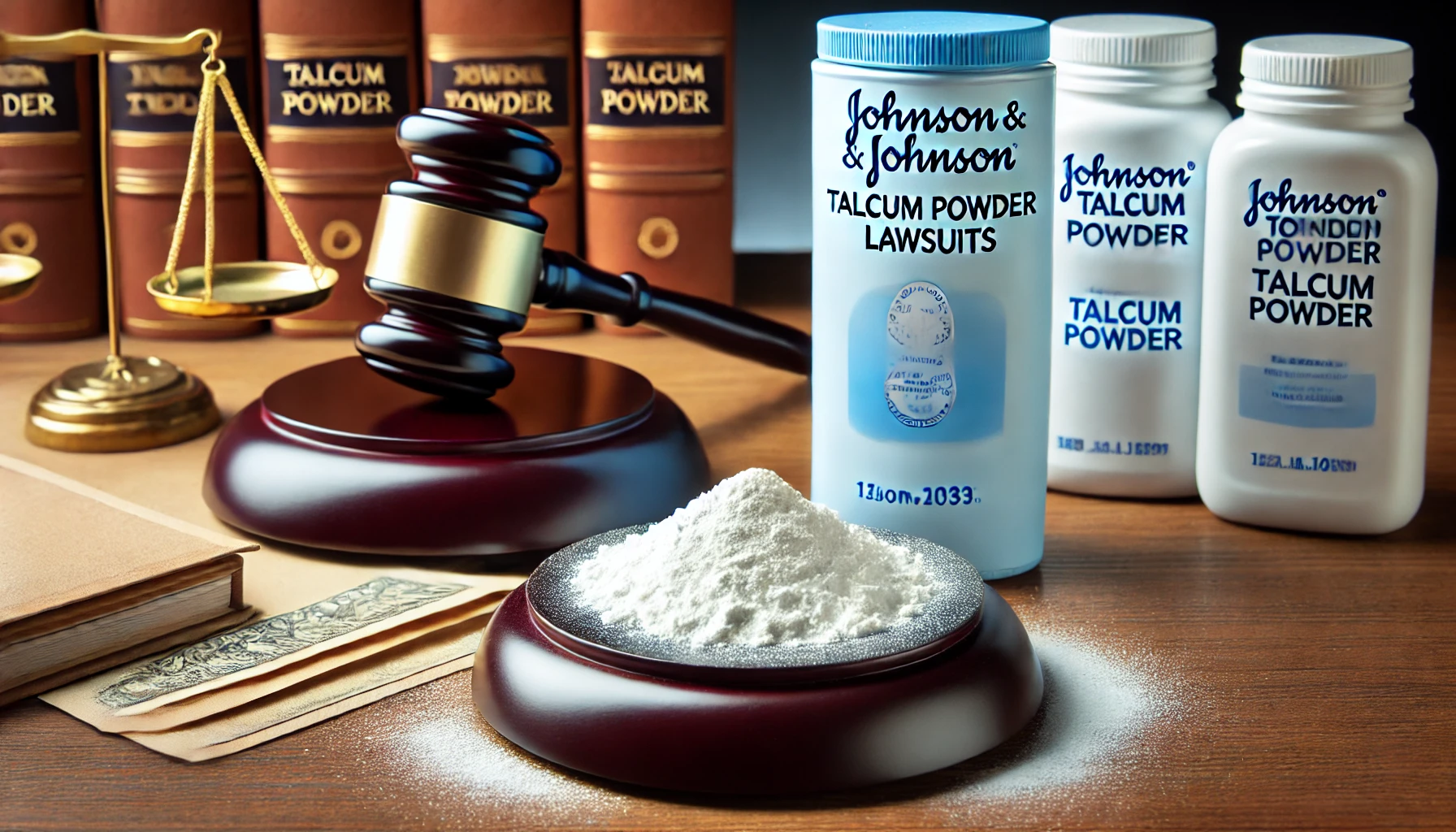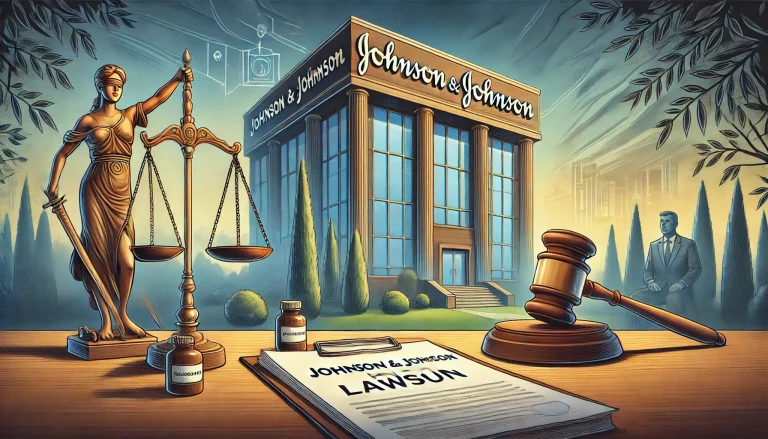Johnson & Johnson Lawsuit is a name that resonates around the globe. As one of the largest healthcare and pharmaceutical companies, it is known for its vast range of products, from baby care essentials to medical devices and prescription medications. However, despite its global recognition and success, Johnson & Johnson has faced numerous lawsuits over the years. These legal battles have revolved around the safety and marketing of its products, raising questions about the company’s practices and accountability. This article aims to provide a thorough understanding of the major lawsuits faced by J&J, their implications, and how they have affected the company.
Johnson & Johnson Lawsuit: A Closer Look at Major Legal Challenges and Their Impact
Johnson & Johnson Lawsuit (J&J), a household name in healthcare and consumer goods, has faced numerous lawsuits over the years. These cases have highlighted concerns about the safety and marketing of some of its products, leading to substantial legal and financial consequences. From talcum powder linked to cancer to faulty medical devices, J&J has been at the center of high-profile legal battles.
One of the most notable controversies revolves around its talc-based baby powder. Thousands of lawsuits allege that prolonged use of the product caused ovarian cancer and mesothelioma due to asbestos contamination. While J&J has denied the claims, internal documents revealed the company had known about potential asbestos contamination for decades. This resulted in billions of dollars in settlements and the global discontinuation of talc-based powders by 2023.
Beyond talc, J&J’s subsidiary, DePuy Orthopaedics, faced lawsuits over metal-on-metal hip implants that caused severe complications, including metal poisoning and tissue damage. Similarly, vaginal mesh implants and the antipsychotic drug Risperdal led to additional legal challenges due to inadequate testing and deceptive marketing practices.
These lawsuits have not only cost the company billions but also damaged its reputation as a trusted brand. In response, J&J has taken steps to reformulate products, improve transparency, and rebuild consumer trust. The company’s legal struggles highlight the importance of corporate accountability and the need for stringent safety standards in the healthcare and consumer goods industry.
Major Types of Lawsuits Against J&J
Talcum Powder Litigation
One of the most high-profile legal challenges J&J has faced involves its talcum powder products, such as baby powder. Thousands of women have filed lawsuits claiming that regular use of talcum powder led to the development of ovarian cancer and mesothelioma, a rare cancer caused by asbestos exposure. The core issue in these lawsuits is that J&J’s talc-based products allegedly contained trace amounts of asbestos, a substance known to be carcinogenic.
In the 1970s, internal company documents indicated that J&J was aware of the presence of asbestos in its talc. Despite this knowledge, the company continued to sell the product without warning consumers of the potential dangers. The legal outcomes have been substantial. In 2018, a Missouri jury awarded $4.7 billion in damages to 22 women who claimed that the talcum powder caused their cancer. This landmark case was followed by many other lawsuits, ultimately leading J&J to announce the discontinuation of talc-based baby powder in the U.S. and Canada in 2020, and globally by 2023. The company has shifted to using a cornstarch-based formula as a safer alternative.
Hip Implant Litigation
Another significant legal issue for Johnson & Johnson involved its DePuy Orthopaedics division, which produced metal-on-metal hip implants. These implants, intended to replace damaged hips, were found to cause serious complications. Many patients reported experiencing severe pain, difficulty walking, and tissue damage due to metal ion buildup in their bodies. As a result, thousands of patients filed lawsuits against J&J, claiming that the implants were defectively designed and caused irreversible harm.
The litigation began to gain momentum in 2010, when it was revealed that the implants had a higher failure rate than expected. In 2016, a Texas jury awarded $500 million in damages to five plaintiffs, but this was later reduced to $151 million. By 2019, J&J agreed to a $1 billion settlement to resolve a majority of the claims. However, the financial and reputational damage caused by this litigation was immense, as many patients were left with lifelong complications.
Vaginal Mesh Implant Cases
Johnson & Johnson also found itself embroiled in legal battles over its vaginal mesh implants. These devices were used to treat conditions like pelvic organ prolapse and urinary incontinence in women. Unfortunately, many women who received these implants experienced severe complications, such as infections, pain, and organ perforation. The lawsuits filed against J&J claimed that the company failed to properly test the products and misled consumers about their safety.
The legal repercussions of these faulty devices were significant. In 2022, an Australian class action involving more than 700 women resulted in a $300 million settlement. In the United States, J&J reached a $117 million settlement in 2019 with 41 states and the District of Columbia over deceptive marketing practices related to vaginal mesh implants.
Risperdal Marketing Lawsuits
Another notable lawsuit involved J&J’s antipsychotic drug Risperdal. The company was accused of illegally marketing the drug for off-label uses, particularly for treating elderly patients with dementia. Plaintiffs argued that J&J concealed the risks associated with Risperdal, which included severe side effects like gynecomastia (the development of breast tissue in males).
In 2013, J&J agreed to a $2.2 billion settlement to resolve criminal and civil investigations into the marketing of Risperdal and other drugs. The settlement also included penalties for promoting the drug for uses that were not approved by the FDA.
Recent Legal Challenges
Talcum Powder Cases in 2024
Even as J&J moves forward with its decision to discontinue talc-based baby powder, the company is still facing legal challenges. In October 2024, a Connecticut jury awarded $15 million to a man who claimed that decades of using J&J’s talcum powder caused him to develop mesothelioma. This ruling underscores that J&J’s legal troubles related to talc are far from over. The company has indicated that it plans to appeal the verdict, but this case serves as a reminder of the ongoing litigation over the safety of its talc products.
Cold and Flu Medicine Class Action
In December 2024, a class action lawsuit was filed in Australia against J&J, alleging that the company sold cold and flu medications containing phenylephrine, a decongestant that studies have shown to be ineffective when taken orally. The class action represents consumers who feel they were misled by J&J’s marketing of these products. This is yet another example of the company’s ongoing legal issues and its struggle to maintain consumer trust in its products.
Financial and Reputational Impact
The financial consequences of these lawsuits have been enormous. J&J has paid billions of dollars in settlements, jury awards, and legal fees. For example, the talcum powder litigation alone has cost the company billions, with a growing number of plaintiffs joining the legal battle. In total, J&J has spent over $20 billion on litigation and settlements related to its talcum powder products.
Beyond the financial impact, these lawsuits have damaged J&J’s reputation. As a trusted brand, the company was once known for its commitment to safety and quality. However, these legal challenges have eroded public confidence in its products. Many consumers now view the company with skepticism, and some have even stopped purchasing J&J products altogether.
Steps Taken by Johnson & Johnson
In response to these lawsuits and the damage to its reputation, J&J has taken several steps to address consumer concerns.
- Product Reformulation: To avoid further legal issues, the company has replaced its talc-based baby powder with a cornstarch-based alternative. This move aims to address concerns about the presence of asbestos in talc, while offering consumers a safer option.
- Recalls and Discontinuations: J&J has recalled certain products and has discontinued others to prevent further legal problems. For example, the company has phased out its metal-on-metal hip implants in favor of safer alternatives.
- Focus on Transparency: J&J has also pledged to be more transparent with consumers and regulators. This includes providing more information about product safety and testing, as well as cooperating with regulatory bodies to ensure that its products meet high standards.
Broader Implications
The lawsuits against Johnson & Johnson have highlighted the importance of corporate responsibility and consumer safety. As a result of these legal battles, consumers have become more cautious about using products from large corporations. J&J’s legal issues have led to increased scrutiny of corporate practices, with many now demanding more rigorous testing and clearer labeling of products.
In addition, the lawsuits have influenced the regulatory environment. Governments and regulatory bodies have implemented stricter rules for product testing and marketing to ensure that companies cannot hide potential risks from consumers. The legal precedents set in these cases will likely affect how similar lawsuits are handled in the future.
Conclusion
Johnson & Johnson Lawsuit legal challenges have had far-reaching consequences, both for the company and for the consumers who trusted its products. While J&J remains one of the most recognized names in healthcare, its legal battles have cost the company billions and damaged its reputation. In response, J&J has made significant changes to its operations, including reformulating products, recalling unsafe items, and improving transparency.
These lawsuits serve as a valuable lesson for other corporations about the importance of consumer safety and corporate accountability. They also remind consumers to remain vigilant and informed when choosing products from large corporations. As J&J continues to face legal challenges, its story serves as a reminder that no company is immune from the consequences of unethical practices.
FAQs
Why has Johnson & Johnson faced lawsuits over its talcum powder?
J&J’s talcum powder was alleged to contain asbestos, causing ovarian cancer and mesothelioma in users.
What was the largest settlement in J&J’s talcum powder lawsuits?
In 2018, a jury awarded $4.7 billion to 22 women claiming talc caused their cancer.
What other products besides talcum powder have led to J&J lawsuits?
Faulty hip implants, vaginal mesh implants, and the antipsychotic drug Risperdal have all been subjects of litigation.
What steps has J&J taken in response to these lawsuits?
J&J discontinued talc-based baby powder globally, replaced it with cornstarch, and settled multiple cases.
How have these lawsuits affected Johnson & Johnson’s reputation?
The lawsuits have significantly damaged consumer trust, despite J&J’s efforts to reform its practices.
Article Recommendations
Sheetz Lawsuit Background Checks Debate: Are Blanket Hiring Policies Putting Companies at Risk?
UWM Lawsuit 2024: Why the Mortgage Industry Is Watching These Legal Cases Closely
Sparta Mesothelioma Legal Question: Exploring Compensation, Lawsuits, and Asbestos Trust Funds




